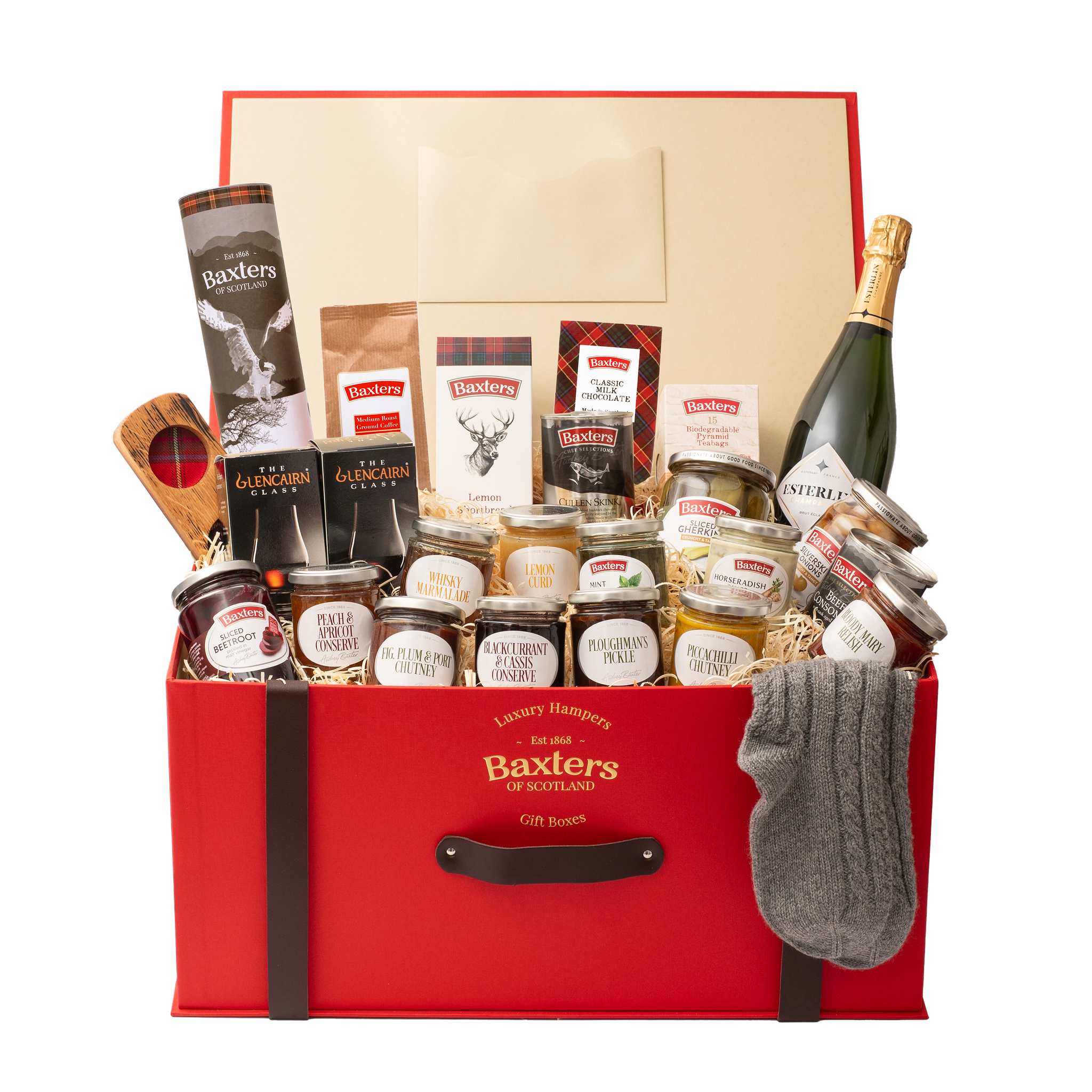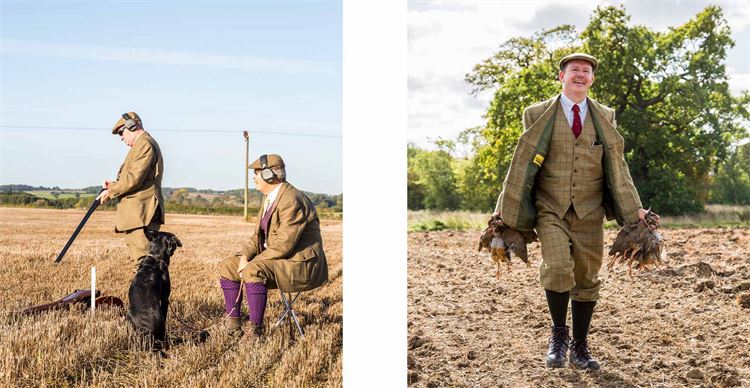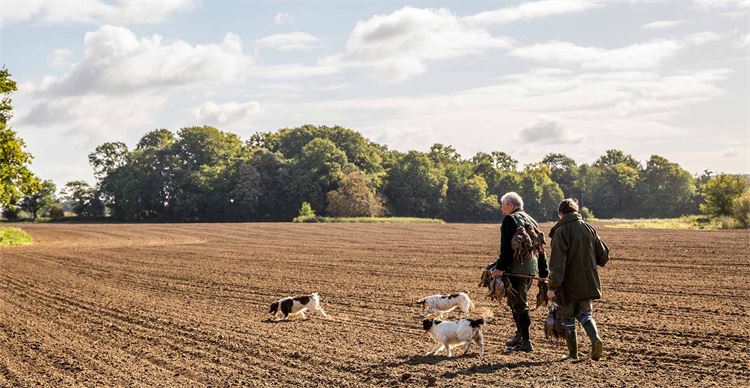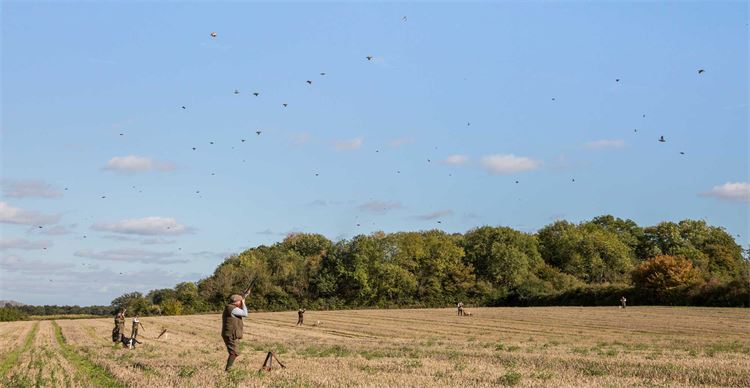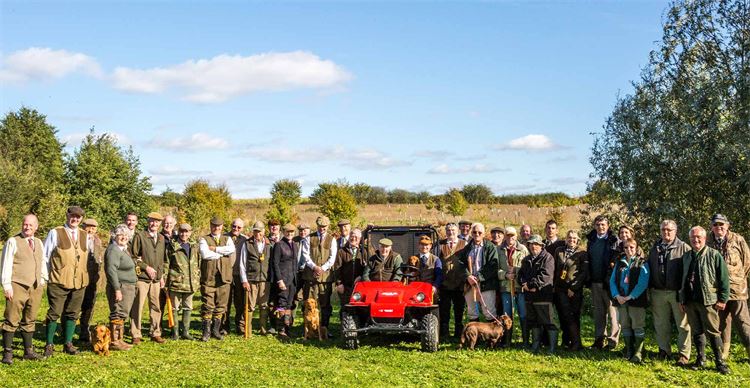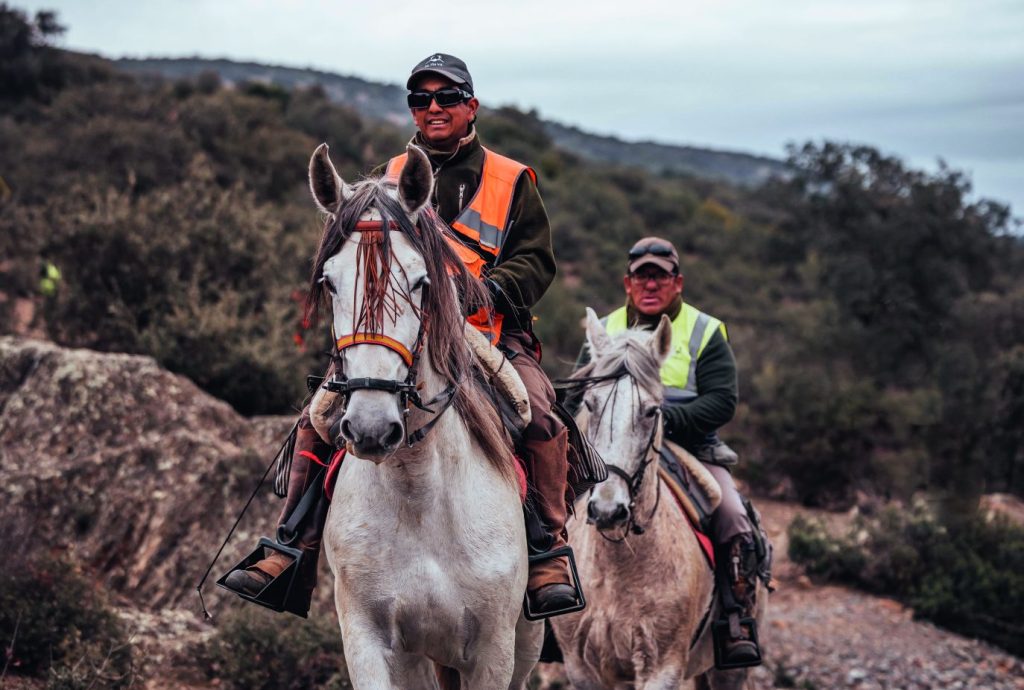Stowlangtoft shoot, Suffolk
The Stowlangtoft shoot syndicate in Bury St. Edmunds has been in operation for over 75 years, so what's the secret to success?
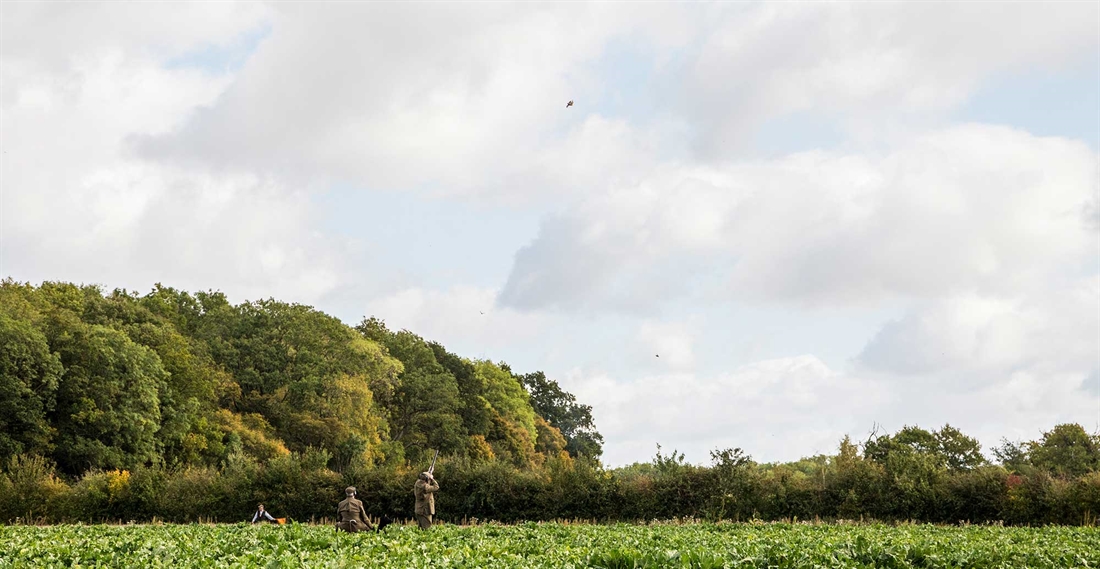
Many will associate the year of 1936 with the death of King George V. It was also the year that the Spitfire took to the skies on its maiden voyage, suntan lotion became a ‘thing’ and the average price of a house in London was £519. Meanwhile, in the Suffolk village of Stowlangtoft, just a few miles north of Bury St Edmunds, the Catchpole family hosted their first ever syndicate shoot day.
Driven shooting began on the then 10,000-acre Stowlangtoft Estate in the late 1800s. Indeed HRH Edward the Prince of Wales was a regular visitor during this time – the hefty patch of East Anglia was synonymous with premier traditional partridge shooting.
It was in 1929, however, that current owner Roger Catchpole’s great grandfather acquired the estate. Seven years later he’d form what would prove to be a syndicate with impressive longevity – one that, but for a break during the Second World War, has been running ever since.
The Stowlangtoft syndicate has been operating now for over 75 years, celebrating their diamond anniversary in 2017. Reaching such a milestone is an impressive feat for any shoot, so it was with excitement that we accepted an invitation at Fieldsports HQ to tag along for a day.
I guess it would be easiest at this point to fill column inches with a superlative-laden description of how refreshing, different or unique the Stowlangtoft shoot came across during my eight-hour visit. The truth is, it reminded me of many other small family shoots – the sort I’d frequent with a beating flag in my youth; the sort that many seasoned game Shots, countrymen and women now talk of with misty eyes and a sense of nostalgia. They’re not rare, but they are often little known, and perhaps not celebrated enough. It’s the spirit of these shoots which is so worthy of celebration.
With 10 days a season – eight let and two for the family – and bag sizes averaging 150, the emphasis here certainly steers well clear of volume. “The shoot has to wash its face, but we’re not about bag sizes, ratios and making money,” explained Roger as he welcomed me into the recently extended shoot room on a bright day in early October. “Atmosphere, a community spirit and doing things right is far more important to us than what’s on the gamecart at the end of the day.”
I didn’t just want to take Roger’s word for it, though. There are 12 regular Guns in the syndicate, nine of whom were shooting on this day. And, sure enough, throughout the course of the day, each and every one of them made an effort to describe to me what it is that keeps them coming back.
“The membership changes slightly every few years, so you meet new people gradually, but it still feels like a very familiar team,” explained Peter Wyman over coffee before the morning briefing. “Sometimes people can’t make it, or decide to share a peg or send a friend in their place, which only adds to the spirit.”
This familiarity and camaraderie was evident from the off. After drawing their pegs, the Guns loaded into the new Gunbus and wasted no time in engaging in a bit of light-hearted raillery – from wagers on whose dog would run in first to admiring David Hill’s unintentionally air-conditioned breeks.
“We like syndicates and private shoots because you’re generally shooting with people who know what they’re doing,” David’s father, Bob, told me as we walked to the pegs on the first drive, Take-Off. “We’ve been on a couple of let days through a sporting agency and they’ve been awful. The team showed no real interest in getting to know one another, and some of the Guns clearly knew nothing about the sport or its associated etiquette and traditions.”
Happily, this is not the case at Stowlangtoft. In fact, a team with little know-how might have been a little downbeat after that first drive – a new, experimental drive which didn’t work with the north-westerly wind and bright sunshine – most of the partridges heading back over the beaters or wide of the end Guns. This team, however, knew it to be the nature of the game – the only sunken spirits in the form of whisky and Baileys served by the forever-smiling Lee Woodham back at the Gunbus.
But it’s not just the Guns who feel a true part of the team. Lee grew up in the village and has been beating at Stowlangtoft for a number of years. This would be his first season taking on the job of helping Roger host days, in the place of Jim Greenwood – the latter a complete newcomer to the sport 10 years ago who has immersed himself in the shoot ever since, despite never actually picking up a gun.
Without doubt, inclusivity is an area where the Catchpoles really excel. “My daughter has been coming here and shooting with me since she was 12,” said Russell Eacott. “Roger has always been very encouraging and keen to get as many people out shooting as possible.” And then there is Nigel, a syndicate member since the early ’90s who suffered a stroke over 25 years ago. Now unable to walk to his peg, Nigel still enjoys a few days’ shooting early in the season whilst the weather is warm, sitting in the line on the ATV that Roger selflessly commandeers before positioning himself.
There’s a real family feel to the whole thing – not surprising, really, as Roger’s parents Cath and John both still enjoy being a part of proceedings, working their two cockers and generally helping out where they can.
So how about the shooting? Stowlangtoft is partridge territory through and through. Redlegs are the primary quarry, and a few pheasants are shot later in the season. There is a small grey partridge conservation project on part of its 1,200 acres, too, which the family are looking to build on.
To say the birds towered across the line in rhythmic waves on this day would be inaccurate, but everyone pulled the trigger on most of the drives. The third drive, Stockings, seemed a particular favourite as the birds were driven traditionally over tall hedgerows. “It’s lovely being able to watch the whole line in the wide, open spaces,” said George White as he collected the spent cartridges from around his feet with a smile.
The highlight for me, though, came after the fourth drive – ‘Boundary drive’ – which really tested the noses of the dogs. Here the Guns stood in a dense field of sugarbeet as headkeeper Michael Middleditch and the beaters made the best of a nightmarish bright sun – the flat-ground shoot’s nemesis.
Once the horn had sounded, husband and wife Graham and Joannie Botwright swept the line methodically with their four springers, whilst the rest of the party – Guns, beaters, pickers-up and staff – gathered by the recently built wooden shoot hut, ‘The End Peg’, for sloe gin and Champagne, sausage rolls and a thank-you speech from Roger. In the background, young hawthorn, ash and oak trees, all planted in the last decade, broke the skyline.
Here was a group made up of people from all walks of life and any number of professions. They smiled and laughed with each other. Conversation ranged from boar shooting in France to favourite films, and Donald Trump’s Twitter account to the end-of-season (anonymous) survey which Roger carries out in an effort to constantly tweak and improve the experience for the syndicate.
Before we knew it, we were back in the comfortable shoot room, seated around the dining table and awaiting our late lunch (they prefer to shoot through rather than stop for a big meal in the middle of the day). Naturally the conversation turned to game – dishes, recipes and the demand for it. “All of our game is shared between the Guns, beaters, pickers-up and, sometimes, the local game dealer might get some,” explained Roger. “We could shoot more days and larger bags if we wanted to. But why would we want to?
“Put it this way,” he continued. “Would you rather shoot two 150-bird days or one of 300? I know which I’d prefer.” The others who sat within earshot nodded their heads in agreement.
A lot has changed in the past 75 years, and yet much remains the same in game shooting. The burning question is, where will our sport be in another three quarters of a century? I for one remain hopeful that shining examples of shoots like Stowlangtoft will continue to stand the test of time.
Related Articles
Get the latest news delivered direct to your door
Subscribe to Fieldsports Journal
Elevate your experience in the field with a subscription to Fieldsports Journal, the premium publication for passionate country sports enthusiasts. This bi-monthly journal delivers unparalleled coverage of game shooting, fishing and big game across the UK and beyond.
Each issue offers a stunning collection of in-depth features, expert opinions and world-class photography, all presented in a timeless yet contemporary design.
Save 10% on shop price when you subscribe, with a choice of packages that work for you. Choose from Print & Digital or Digital only with each journal delivered directly to your door or via the app every other month, plus access to past issues with the digital back issue library.





